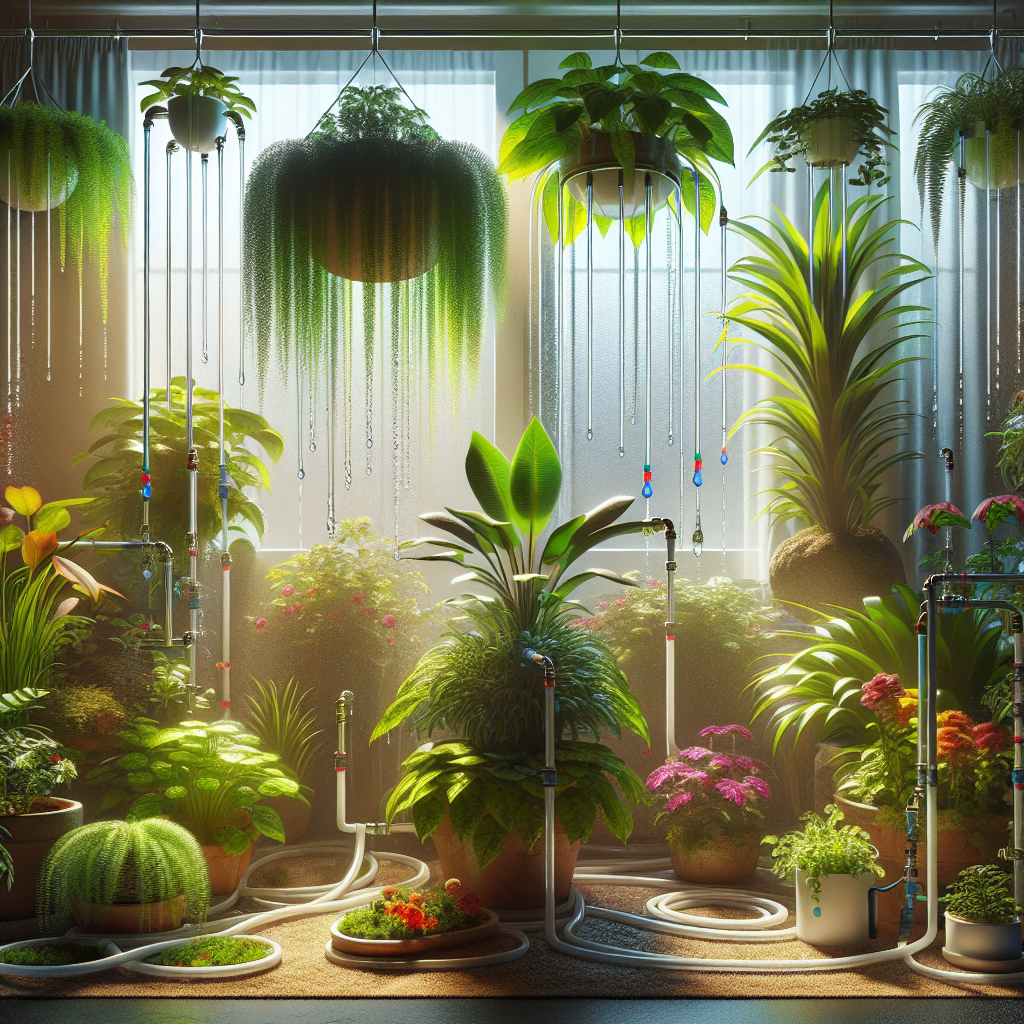Indoor plants have become increasingly popular in homes and offices as they add a touch of nature to indoor spaces, improve air quality, and brighten up the room. However, just like outdoor plants, indoor plants also need regular watering to thrive. One popular method of irrigation for indoor plants is slow drip irrigation. In this article, we will discuss the benefits of using slow drip irrigation for indoor plants.
Slow drip irrigation is a method of watering plants that involves delivering water directly to the plant’s root system at a slow and steady rate. This is typically done using a dripper system or a self-watering pot that gradually releases water into the soil over an extended period of time. This method of irrigation has several advantages over traditional watering methods such as pouring water from a watering can or overhead watering with a hose.
One of the main benefits of using slow drip irrigation for indoor plants is that it promotes healthier root growth. By delivering water directly to the roots, slow drip irrigation encourages the roots to grow deeper into the soil in search of moisture. This helps to establish a strong and healthy root system that can better support the plant’s growth and development.
Another advantage of using slow drip irrigation is that it helps to prevent overwatering and underwatering. With traditional watering methods, it can be easy to accidentally overwater or underwater your plants, which can lead to root rot or dehydration. Slow drip irrigation provides a consistent and regulated supply of water to the plant, ensuring that it receives just the right amount of moisture it needs to thrive.
In addition, slow drip irrigation can help to conserve water by reducing runoff and evaporation. When you water your plants with a watering can or hose, much of the water can end up running off into the surrounding soil or evaporating before it reaches the roots. With slow drip irrigation, the water is delivered directly where it is needed most – at the roots – minimizing wastage and maximizing efficiency.
Furthermore, using slow drip irrigation for indoor plants can help to reduce maintenance efforts and save time. Once you set up a dripper system or self-watering pot for your plants, you can simply refill the reservoir when needed and let it do its job without having to constantly monitor your plants’ moisture levels.
Another benefit of using slow drip irrigation for indoor plants is that it can help to prevent diseases caused by overwatering or poor drainage. When plants are exposed to excess moisture from traditional watering methods, they are more susceptible to fungal infections and root rot. Slow drip irrigation ensures that your plants receive adequate moisture without risking their health.
Additionally, slow drip irrigation can be particularly beneficial for busy homeowners or frequent travelers who may not always have time to water their indoor plants regularly. By setting up a dripper system or self-watering pot for your plants, you can rest assured knowing that they are receiving a consistent supply of water even when you are away.
In conclusion, slow drip irrigation offers numerous benefits for indoor plants including promoting healthier root growth, preventing overwatering and underwatering, conserving water, reducing maintenance efforts, preventing diseases, and providing convenience for busy homeowners or travelers. If you want to ensure that your indoor plants thrive and flourish with minimal effort on your part, consider using slow drip irrigation as a sustainable and effective method of watering your beloved green companions.
By incorporating this efficient watering technique into your plant care routine, you can enjoy all these benefits while creating an environment where your indoor plants can thrive and bring joy into your home or office space.













